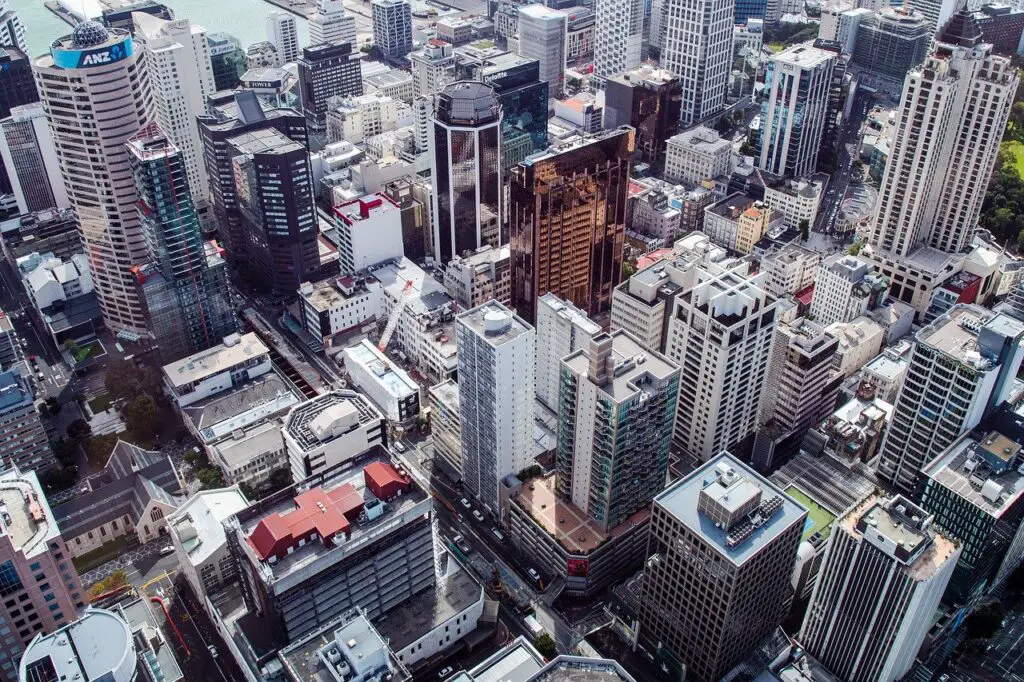When considering a move or evaluating the financial implications of living in different countries, understanding the cost of living is crucial. New Zealand and the USA, both popular destinations with vibrant economies, offer contrasting living experiences. This article explores the cost of living in these two countries, comparing key factors such as housing, food, transportation, healthcare, and education.
Housing
New Zealand:
Housing costs in New Zealand can be quite high, especially in major cities like Auckland and Wellington. As of 2024, the average rent for a one-bedroom apartment in the city center is around NZD 2,000-2,500 per month, while outside the city center, it drops to approximately NZD 1,500-2,000.
Buying property is also expensive, with the median house price in Auckland reaching NZD 1.2 million.
USA:
The cost of housing in the USA varies significantly depending on the location. In expensive cities like New York and San Francisco, renting a one-bedroom apartment in the city center can cost between USD 3,000-4,500 per month. In contrast, in more affordable cities like Dallas or Atlanta, the same apartment may cost around USD 1,500-2,000. Home prices also vary widely, with median prices in San Francisco around USD 1.5 million, compared to USD 350,000 in Dallas.
Food
New Zealand:
Grocery prices in New Zealand are generally higher compared to the USA. A typical grocery bill for a family of four can be around NZD 200-300 per week. Dining out is also relatively expensive, with an average meal at a mid-range restaurant costing about NZD 30-40 per person.
USA:
Food prices in the USA are more affordable, particularly in suburban and rural areas. The average weekly grocery bill for a family of four is around USD 150-250. Eating out varies widely, with a meal at a mid-range restaurant costing about USD 20-30 per person.
Transportation
New Zealand:
Public transportation in New Zealand is reliable but limited to major cities. Monthly public transport passes in Auckland cost around NZD 200. Gasoline prices are relatively high, at approximately NZD 2.50 per liter. Car ownership is common, and the cost of maintaining a car, including insurance and registration, can be substantial.
USA:
Public transportation in the USA is well-developed in major cities like New York, Chicago, and Washington D.C., but less so in smaller cities. A monthly transit pass can range from USD 70 to 150.
Gasoline is cheaper, averaging around USD 1.00 per liter, making car ownership more affordable.
However, commuting distances can be longer, especially in sprawling metropolitan areas.
Healthcare
New Zealand:
New Zealand offers a public healthcare system funded by taxes, providing free or low-cost healthcare services to residents. However, waiting times for non-urgent procedures can be long. Private health insurance is available for those seeking faster access to services.
USA:
Healthcare in the USA is predominantly private, and costs can be very high without insurance. Monthly premiums for health insurance vary widely, with individual plans costing around USD 300-500 and family plans significantly higher. Co-pays and deductibles add to the out-of-pocket expenses, making healthcare a significant portion of the cost of living.
Education
New Zealand:
Public education in New Zealand is free for residents up to the tertiary level. Private schools and tertiary education institutions charge tuition fees, which can be substantial. The average annual tuition fee for a domestic student at a university is around NZD 6,000-8,000.
USA:
Education in the USA is diverse, with public schools funded through taxes and offering free education up to the 12th grade. Private school tuition can range from USD 10,000-50,000 per year. Higher education is notably expensive, with public university tuition for in-state students averaging USD 10,000-15,000 per year, and private universities charging upwards of USD 30,000-50,000 annually.
the cost of living in New Zealand and the USA varies widely depending on the region and lifestyle.
Generally, housing and groceries are more expensive in New Zealand, while transportation and healthcare costs can be higher in the USA. Both countries offer high living standards, but potential residents must consider these cost differences when planning a move or comparing financial implications.
Additional Factors to Consider
Utilities
New Zealand:
Utility costs in New Zealand, including electricity, heating, cooling, water, and garbage, for a standard apartment can average around NZD 200-300 per month. Internet services typically cost around NZD 80-100 per month for high-speed connections.
USA:
In the USA, utility costs for a similar apartment can vary widely but generally average around USD 150-250 per month. Internet services are comparable, with high-speed connections costing about USD 60-100 per month.
Entertainment and Leisure
New Zealand:
Entertainment and leisure activities in New Zealand, such as movie tickets, dining out, and gym memberships, are relatively expensive. A movie ticket costs around NZD 18-20, while a monthly gym membership can range from NZD 60-100. Outdoor activities and nature parks are a big part of Kiwi life and often free or low-cost.
USA:
Entertainment costs in the USA also vary, with a movie ticket costing around USD 12-15 and a gym membership ranging from USD 30-60 per month. The USA offers a wide range of leisure activities, including sports, cultural events, and outdoor adventures, with costs varying significantly depending on the location and type of activity.
Taxes
New Zealand:
New Zealand has a progressive income tax system, with rates ranging from 10.5% to 33%. Goods and Services Tax (GST) is 15% on most goods and services. There are no state or local taxes, which simplifies the tax structure.
USA:
The USA has a more complex tax system with federal, state, and sometimes local income taxes.
Federal income tax rates range from 10% to 37%, depending on income levels. State taxes vary, with some states like Texas having no state income tax, while others like California have high state income tax rates. Sales tax also varies by state and locality, typically ranging from 5% to 10%.
Salaries and Job Market
New Zealand:
The average salary in New Zealand is lower than in the USA, with the median salary around NZD 52,000 per year. Key industries include agriculture, tourism, and technology. Job opportunities can be limited in smaller towns, with more prospects in larger cities.
USA:
Salaries in the USA are generally higher, with the median salary around USD 53,000 per year. The job market is diverse, with strong industries in technology, finance, healthcare, and manufacturing. Larger cities offer more job opportunities and higher salaries, but also higher living costs.
Quality of Life
New Zealand:
New Zealand is known for its high quality of life, with beautiful landscapes, low crime rates, and a strong emphasis on work-life balance. The healthcare and education systems are highly regarded, and there is a strong sense of community and environmental consciousness.
USA:
The USA offers a diverse quality of life depending on the region. It boasts advanced infrastructure, a wide range of cultural and recreational activities, and excellent educational institutions. However, the cost of healthcare and higher education can be significant, and income inequality is more pronounced.
When comparing the cost of living between New Zealand and the USA, it’s clear that both countries have their unique advantages and challenges. New Zealand offers a more relaxed lifestyle with higher costs for housing and groceries, but benefits from a strong public healthcare system and beautiful natural surroundings. The USA provides a diverse and dynamic living experience with higher salaries and more job opportunities, though healthcare and education costs can be substantial.
Ultimately, the decision between living in New Zealand or the USA depends on individual priorities, such as career opportunities, lifestyle preferences, and financial considerations. Both countries offer high standards of living, but the cost of living differences can significantly impact the overall experience.






